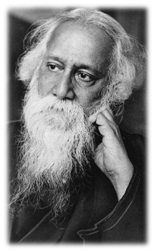- Home
- About Us
-
Consular Services
- Launch of e-Clearance for Afterlife Remains (eCARe) portal
- Instructions regarding entry into the consular Wing
- Reissue of International Driving Permit (IDP)
- Postal Applications
- Visa Services
- Passport Services
- OCI Information
- Renunciation of Indian Citizenship/Surrender Certificate
- Attestation,Consular and Misc.Services
- Weekly Open House
- MADAD - Consular Services Management System
- Indian Community Welfare Fund
- FAQs on Marital disputes involving NRI/PIO spouses

- Public Notices & Circulars
-
Embassy Wings
- Economic & Commercial Wing
- Contacts
- GI Digital Catalogue

- Overview of Indian Economy
- India-Germany Economic & Commercial Relations
- Doing Business in India
- Make in India

- Invest India

- Flagship Programs of Government of India

- Doing Business in Germany
- Trade Fairs
- Trade Dispute Advisory
- Foreign Investment
- Foreign Trade
- Newsletters

- Attestation of Documents

- Community Welfare
- Culture
- Information Wing/Media Center
- Science & Technology

- Political
- Consular
- Defence Wing
- Economic & Commercial Wing
- Media Center
- India-Germany Relations
- MIIM
- Useful Links
- Tenders
Vom Mut, den eigenen Weg zu gehen Indian Dance Theatreon the occasion of Tagore's birth anniversary
|
Monday 30May 2016 18:00 hrs Auditorium |
|
A Tribute to Tagore Sprache/Language: Deutsch/German |
|
An event featuring in the Asia Pacific Weeks, Berlin 2016 |
||
|
The name Rabindranath Tagore needs no introduction to anybody associated with India. The first Nobel Laureate of India, Tagore is a symbol of Bengali identity and culture. Two countries of the world use his compositions as their national songs. Tagore was foremost a poet, but he was also a gifted musician, a novelist and even a painter. His music combines Indian classical music, the ragas, with poetry to form his own unique style called RabindraSangeet. The Indo-German dance school NATARAJ e.V. presents an Indian dance theatre piece based on texts and dances of Rabindranath Tagore At almost 23 years of age, Shujana was far from all domestic things. Since she had learned to write, it was unbearable with her. She remained in the temple until the Pandit arrived. With him she was reading the sacred hymns and was determined to study the fundamental works of the Patanjali in original language. Der NameRabindranath Tagorebenötigt bei keinem Indien-Kenner eine Erklärung. Als ersterNobelpreisträgervon IndienistTagore ein Symbol derIdentität und Kultur Bengalens. ZweiLänder der Weltverwendenseine Kompositionenals ihre Nationalhymnen.Tagorewarvor allem einDichter, aber er war auchein begnadeterMusiker,Schriftsteller undMaler. Seine Musikverbindetklassische indische Musik, dieRagas, mit Poesiezu seinemeigenen Stil,genanntRabindraSangeet. Die Deutsch-Indische Tanzschule NATARAJ e.V. präsentiert ein indisches Tanztheater-Stück basierend auf Texten und Tänzen von Rabindranath Tagore. „Wenn Leben sich wild empört, Wenn ein winziges Samenkörnchen, vom Wind in die Lüfte gehoben, auf ein massives Gebäude getragen wird, so sprießen eines Tages daraus zarte Keime des Ashath-Baumes. Und zu guter Letzt sprengt der junge Trieb die steinerne Brüstung. Gerade so wurde auch in die starre Daseinsweise ihrer Familie von irgendwo her ein winziges Teilchen Leben geweht. Seitdem hat die alte Ordnung einen Sprung. |
||
|
Embassy of India Bus 200 Tiergartenstraße |
|
Free entry to all events for a maximum of 200 guests with valid Indian, German or other valid ID cards/passports having German stay permits. EU citizens may carry copies of their local registration certificate. Bags are not allowed. Information: 030-25795405 Freier Eintritt für maximal 200 Gäste mit gültigen indischen, deutschen oder anderen gültigen Personalausweisen/Reisepässen mit Aufenthaltsgenehmigung für Deutschland. Das Mitführen von Kopien ihrer örtlichen Anmeldebescheinigung ist für EU-Bürger notwendig. Taschen sind nicht erlaubt. Informationen: 030-25795405 |






























